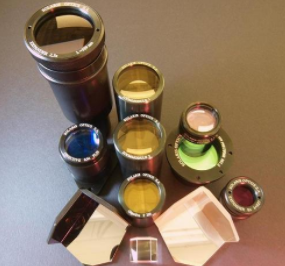NEPTUNE which stands for „New Cross Sectoral Value Chains Creation across Europe Facilitated By Clusters for SMEs’ Innovation in Blue Growth„ is an innovation action project supported by the European Commission. The overall project’s objective is to foster the development of Blue Growth industries in Europe and beyond, namely: water management in urban and rural environments, fluvial and maritime transport and port logistics, renewable marine energy. This development is based on the construction of new value chains and the reconfiguration of existing ones driven by the integration of the new technologies and know-how between Water, Aerospace, ICT and Agriculture cluster industries. The NEPTUNE project is supposed to lead to the improvement of raw material consumption level and offered solutions.
For further information, check NEPTUNE website.
Below more information about projects from Poland, which received a grant from SPACE PL this January.
An Anticipation of Blue Economy Cascading Effects (ABECE) is a project cofinanced by NEPTUNE, developed by Polish IT company ITTI Sp. z o.o. from Poznań in cooperation with a company Terraspatium. The ABECE project will deliver a simulation tool for cross-sectoral cascading effects identification and prediction in regards to the possible environment and coastal hazards.
The tool interface, source: ITTI Sp. z o.o.
The project will be built upon an IT solution for cascading effects prediction in crisis management.The tool is a ‘what-if’ decision support system, able to simulate the possible consequences of a decision before it is really made. In particular, it focuses on prediction non-obvious paths of the future course of events, which are overlooked by experts. The main domain of application may be: a training of crisis management services, however, it can be also used in the response phase of crisis situations. The Proposed solution will support decision makers related to Blue Economy such as mayors of coastal towns whose economy relies on tourism, harbours and marinas operators, SAR units, etc. to predict severe environmental disruptions. Definition of such disruptions and its consequences is essential for proper functioning of various areas of Blue Economy like tourism or logistics.
GREAT EYES 1 project will allow the consortium driven by the French company EXTREM’ VISION and supported by Polish company SOLARIS OPTICS S.A. to develop the study and prototyping the new and innovative observation device. The main objective of the GREAT EYES 1 project is to create a solution that consists of a device like a compact and portable binocular integrating ultra-specialized digital sensor.
Optical systems, source: solarisoptics.pl
This new product development aims to offer a new tool of supervision for the actors of the maritime and river transport as well as for security and borders surveillance. Today for the surveillance of the aquatic surface from a ship the devices used are traditional binoculars with prisms. These are available in several versions that are more or less efficient: magnification, compass, auto zoom, image stabilization. But these have all limitation when the brightness decreases at dusk or at dawn. Such a high-specialized sensor will be an innovative product, that may noticeably increase quality and conditions of uniformed services’ labor.
The Cyanobacteria Bloom Alert Service (CBAS) project of N7 Mobile Sp.z o.o. and French SME I-SEA, aims at the development of the technology and infrastructure to provide a comprehensive, satellite-based cyanobacteria alert system in Poland due to prevent waters against its toxicity.
Widely distributed around the globe, cyanobacteria grows in marine and fresh waters in colonies large enough to be seen from space. The association of toxicity with such an extensive bloom frequently leads to the closure of recreational waters when blooms happen. Potential toxic effects first affect invertebrates and fish, then impact plants and benthic algae and may also induce anoxic conditions in lakes. Considering the combination of these adverse impacts on aquatic systems that may affect various economic sectors and develop major public health issues, the development of large scale monitoring tool of cyanobacterial blooms (in particular of toxic species) is expected. Such a tool would support local population, tourism, and aquaculture. Based on satellite images of the Copernicus constellation, CBAS will deliver near real time (NRT) information about cyanobacterial water blooms in coastal waters and lakes of Kaszuby district. The end-users of the system (public institutions and the general public) will receive the information about possible harmful cyanobacterial blooms within minutes after the detection alongside with the estimated confidence level and relevant satellite images. Observations will be translated into high added-value information, such as bloom location and intensity.
Algal bloom near Reindeer Island, Canada, source: www.esa.int
CBAS opens several development opportunities such as the evaluation of the water toxicity and the prediction of bloom developments based on biophysical models. The sum of these perspectives created through CBAS offer excellent future prospects. What is more, diffusion of the information through a Mobile Application will be developed.






